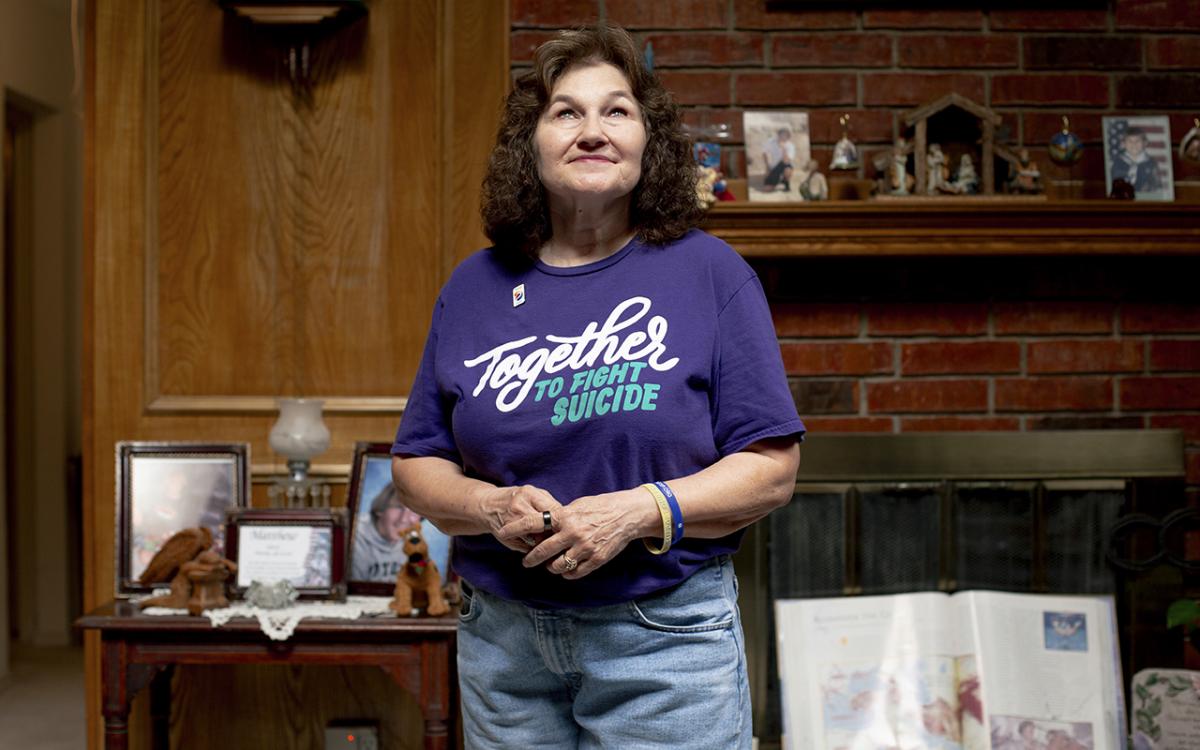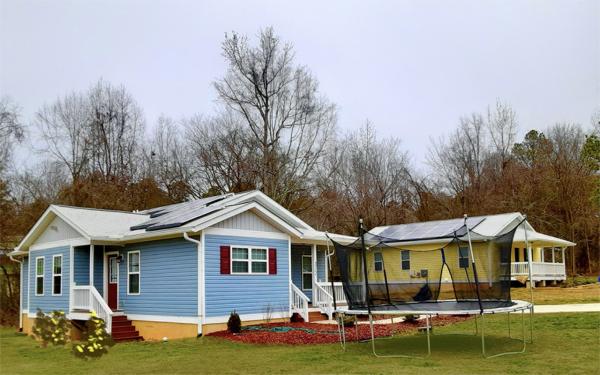By Greg O’Brien
I was out for my evening run, but as so often happens lately, I was not alone. The monsters, all in my mind, were gaining on me, ready to pounce. I had to sprint, a full-out panic dash, to avoid capture at sundown, that moment when Alzheimer’s bears down.
It had begun as a hazy spring afternoon gave way to dusk on the waterfront in pastoral Brewster on Cape Cod: a numbing fog that slowly crept in, first in misty sprays that tingle, then in thick blankets that penetrate the mind and disorient the senses. It had the smell of a chill wind from a raging North Atlantic storm, the kind of nor’easter that takes the breath away.
Faster and faster, beneath the thick canopy of oaks and red maples, the demons were chasing, their screeching howls emerging from the dense, choking groundcover of honeysuckle and myrtle. My heart was pounding, the sweat pouring. Alone, I was enveloped in fear and full paranoia — and the fire in my brain was scorching.
At full gait, I dashed past Brewster’s community garden with its impenetrable stalks of corn, past a forest of moss-covered locust trees bent in grim, twisted forms, past the ancient cemetery of sea captains, dead now for two centuries and more. A blazing red sun dipped into Cape Cod Bay to be doused like a candle. The demons kept coming on, but, with every ounce of my will, I beat them home. No doubt they will return with a vengeance.
As they have. Alzheimer’s and other forms of dementia play tricks on the mind. My life, once a long-distance run, is now a race for survival. So I press on against the odds.
My family tree is a guidepost in this struggle. Alzheimer’s took my maternal grandfather, my mother, and my paternal uncle, and before my father’s death, he too was diagnosed with dementia. The disease has now come for me. I’m a member of a club I never wanted to join.
There are more than 6 million Americans living with Alzheimer’s, and an estimated 55 million people with dementia worldwide, numbers expected to increase exponentially in years to come with the growing population of older people. Changes in the brain — the buildup of amyloid plaques and tau tangles that destroy neurons and lead to Alzheimer’s — can start in one’s 40s without noticeable symptoms. And this is a journey that can take 20 to 25 years to run its serpentine course.
I was diagnosed several years ago with early-onset Alzheimer’s after numerous sports concussions and a traumatic head injury — a severe bike accident without a helmet — that doctors said unleashed a monster in the making. I also carry the strongest genetic risk factor for Alzheimer’s, the gene variant ApoE4, which appears to be on both sides of my family. Today, 60 percent of my short-term memory can be gone in seconds. I often don’t recognize people I’ve known most of my life. I deal with rage, loss of place, loss of self, loss of smell. I sometimes see things that aren’t there. I misplace things regularly and seek to withdraw from social activities more and more. Not long ago, preparing to brush my teeth, my brain told me to reach for my razor rather than my toothbrush.
My heart said, “No … bad dog!”
And at times, privately, I cry the tears of a little boy because at 73, I feel the end looms.On the plus side, I’ve been blessed with a good IQ and what dementia experts call cognitive or synaptic reserve. In essence, that’s the brain’s ability to improvise and find alternate ways, other synapses, when the lights start to dim, says Rudy Tanzi, the Harvard University and Massachusetts General Hospital Alzheimer’s expert on the accumulation of beta-amyloid plaques, neurofibrillary tangles, and inflammation of the brain.
But, despite years of exercising body and brain, the reserve is draining. Doctors suggest that my writing, the essence of my physical self, will likely be the last to go. I hope they are correct. A career journalist, I diligently write everything down on my laptop — my portable brain — so I don’t forget when, where, and why I’m supposed to be. I also regularly email and text myself as a backup to remember. It’s hard to maneuver through Alzheimer’s and other forms of dementia without strategies.
At times, I feel like an ailing centipede: lots of legs, but they’re slowly falling off. In addition to Alzheimer’s, I’ve been diagnosed with prostate cancer and deep depression and anxiety. And two years ago, at New England Baptist Hospital in Boston, I underwent 10 hours of spine reconstruction surgery as doctors cut through bone, muscle, and nerves and inserted steel rods, plates, and screws, all to prevent me from becoming paralyzed.
I’m sustained by faith, hope, and Irish humor. My late mother, Virginia, the hero of my life — I’m one of her 10 children — taught me through her heroic battle with Alzheimer’s how to survive while experts race for a cure. A pity party, she insisted, is just a party of one.
My mother also taught me, in her own words, to fix on Service Above Self, the Rotary maxim, which drives me today. I was the family caregiver on Cape Cod for both my parents, and thus know all sides of this disease. (Last year in the U.S., unpaid caregivers — physically and emotionally at risk from the stress of looking after loved ones — provided people with dementia an estimated 18 billion hours of care valued at $339.5 billion.) I was at my parents’ bedside when they passed away, first my dad, then, four months later, my mom. I saw the torch then passed to me.
Fortunately, I have my own incredible support system — and I take full advantage of the resources available at key Alzheimer’s websites, which are critical for all of us who are fighting dementia. Accurate information is the coin of life. I’ve already mentioned Tanzi, who, in addition to his academic duties, is the chair of the research group at the Cure Alzheimer’s Fund. And then there’s Lisa Genova, who has a PhD in neuroscience from Harvard and is the author of five best-selling novels, including Still Alice, which, when made into a movie, won Julianne Moore a best actress Academy Award for her performance as an accomplished professor with early-onset Alzheimer’s.
“Your brain is amazing,” writes Genova in the introduction to her nonfiction book, Remember: The Science of Memory and the Art of Forgetting. “Every day, it performs miracles — it sees, hears, tastes, smells, and senses touch. It also feels pain, pleasure, temperature, stress, and a wide range of emotions. … Memory allows you to have a sense of who you are and who you’ve been. If you’ve witnessed someone stripped bare of his or her personal history by Alzheimer’s disease, you know firsthand how essential memory is to the experience of being human.”
And, as Genova acknowledges, “while memory is king, it’s also a bit of a dunce.” That is why there is a distinct difference between forgetting where you put your car keys and not knowing what the keys are for — between forgetting where you parked your car and not knowing you have a car. I know that difference full well.
One day, several years ago when I was still driving, I took our trash to the landfill (a polite word for the town dump). After discarding the trash, I was confused about how to get home. I thought in the moment that I could call my wife, Mary Catherine, or one of my kids for a ride. I slowly worked myself into a panic. My bright yellow four-door Jeep was directly in front of me, but in the moment, my brain wouldn’t tell me that it was my car. I was rescued by the timely arrival of a friend who discerned my anxiety and pointed me toward my yellow Jeep.
The demons kept coming on, but, with every ounce of my will, I beat them home. No doubt they will return with a vengeance.
Thankfully, there is optimism on the horizon with ongoing research to slow the pace of this disease in people with mild cognitive impairment and early stages of Alzheimer’s. There is also promise in key clinical trials and in brain health. In July, the Food and Drug Administration approved the use of Leqembi, created by the pharmaceutical company Biogen and Eisai; the approval marks the first time the FDA has sanctioned a drug shown to slow the progression of Alzheimer’s in early stages. The drug works to help clear the amyloid plaque buildups in the brain that are associated with Alzheimer’s disease and the destruction of neurons.
The approval is “a ray of hope for millions of patients who are doing everything they can to enhance and extend their lives and reduce their families’ burdens,” said George Vradenburg, the chair and co-founder of UsAgainstAlzheimer’s. “People with early-stage disease now have a weapon to fight Alzheimer’s. Finally we have a drug that can slow the encroachment of Alzheimer’s into our families’ lives and livelihoods.” (Vradenburg is another one of my trusted, go-to resources; for information about brain health and Alzheimer’s resources, check out his organization’s Brain Guide.)
In addition to early diagnosis and clinical tests, brain health is key to holding Alzheimer’s symptoms at bay. Tanzi has developed a useful acronym: SHIELD. Get plenty of sleep, at least seven hours a night. Learn how to handle stress, which can lead to the creation of more harmful amyloid plaques. Interact with friends; socialization is the key to fighting the urge to withdraw. Make time for daily exercise, which promotes the creation of new brain cells — and to create new synapses between brain cells, learn new things. Finally, eat a healthy plant-based diet rich in vegetables, fruits, legumes, nuts, and seeds.
From the start, in his groundbreaking research, Tanzi focused on amyloid plaques and tau tangles, the prime markers for Alzheimer’s. He draws the analogy of a raging fire in the brain (though for some of us, that experience is more than mere analogy). “We need to put out the fire,” he says, “then save as many trees (neurons) as possible.”
Which is why, Tanzi insists, early detection is key. “This is the elephant in the room,” he says. “Alzheimer’s is not generally diagnosed until the equivalent of congestive heart failure and needed bypass.” This is wrong, he says, noting that by then the “fire” in the brain is out of control.
Over the years, I’ve lost several friends to the all-consuming conflagration that is Alzheimer’s. It pains me and motivates me. Time is fleeting, and we need to find ways to generate more funding for care and a cure.
Meanwhile, I’ve tried to come to terms with my own race for survival. No surprise, I suppose, that, given my background, I’ve found solace in the words of two great American writers. It was the poet Robert Frost who wrote: “In three words I can sum up everything I’ve learned about life. It goes on.”
Ernest Hemingway put an exclamation point on this: “The world breaks everyone and afterward many are strong at the broken places.”
Be strong in the broken places.
A journalist, editor, and publisher, Greg O’Brien is the author of On Pluto: Inside the Mind of Alzheimer’s, and he and his family are the subject of the 2021 documentary Have You Heard About Greg?
This story originally appeared in the November 2023 issue of Rotary magazine.


















.png)


















Four Way Test: True, Fair, Goodwill & Beneficial to All
PO Box 377
Homer, AK 99603
United States of America